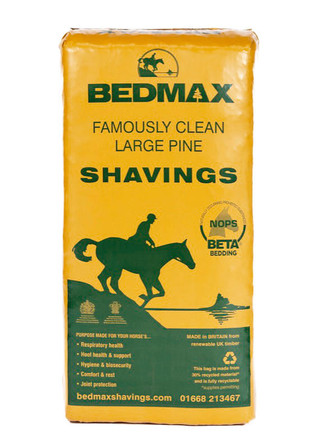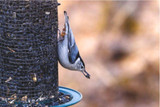Most endangered birds in the UK (and what you can do to help)
Song thrush
This beautiful songbird is one of the most popular visitors to our garden, but they are indeed in decline. In the UK alone we have seen a 50% decline in song thrushes in recent years due to agricultural intensification. Despite this, they are still being considered by many as a species of “least concern!” Don’t worry, you can help to preserve the population of song thrushes in your garden by avoiding harmful pesticides and poisons for slugs and snails, which pose a great threat. You can learn more about the song thrush here.
House sparrow
The house sparrow is renowned for being one of the most sociable and noisiest visitors to visit our gardens, but it’s populations in the UK have decreased by 68% since the early 1970s. Some regions of the UK have even seen a 90% decrease in house sparrows. Its’ thought their declining numbers are a result of predators like the sparrowhawk, but most sadly, radiation from mobile phones has even contributed. You can read more about the house sparrow here.
Starling
The lively starling is one garden bird that has found its way onto the RSPB red list here in the UK. This lively (often considered noisy) bird has a short tail, triangular wings, and runs quite confidently on the ground. It’s rapidly declining in numbers here in the UK, reasons for which are still unfounded. You can learn more about the brilliant starling here. Image courtesy of Jared Belson
Cuckoos
Arguably one of the most recognisable UK birds in the animal kingdom (at least for its call), we’re sad to report that this beautiful bird is also on the red list. There are numerous theories as to why their numbers are dropping, the most common being the dwindling availability of insect food for adult cuckoos. Cuckoos favour hairy caterpillars, particularly one species called the ‘woolly bear’ (which grows to be the garden tiger moth). Garden tiger moth numbers have dropped dramatically, around 92% since 1968. You can learn more about the cuckoo here.
Turtle dove
The turtle dove is a fascinating species that is easily identifiable by the black and white patch on its neck. It is also the only migratory dove or pigeon species in the UK and it’s thought they can cover over 400 miles in one night - pretty impressive. Unfortunately, turtle dove numbers are also in decline here in the UK due to a number of factors, including a loss of habitat (as a result of urbanisation and farming practices), climate change and hunting. You can read more about the impressive turtle dove here.
Fieldfare
The proud-looking fieldfare, with its upright stance and distinctive dappled breast, has been put on RSPB’s ‘red list’ as in the UK only a handful of pairs breed (the red list is a catalogue of UK birds that have become critically endangered). The UK is right at the edge of the fieldfare’s usual breeding range, so opportunities for breeding in the UK are few and far between for this characterful little bird. You can learn more about the fieldfare here. Click here to see more endangered birds placed on RSPB’s red list, as well as the amber and green list.
Click here to see more endangered birds placed on RSPB’s red list, as well as the amber and green list.
So, how do I do my bit to help?
In this section, we’re going to give you some strategies to help you look after our endangered birds and, hopefully, increase their numbers.Spread the word about bird watching
The more bird watchers there are, the more awareness there is. Basically, the more bird watchers and bird enthusiasts we have today, the more we can do for endangered birds tomorrow. You can use our BirdSpotter map to plot any bird sightings.Support conservation initiatives
There are numerous conservation charities doing good work to preserve and boost numbers in the UK. A monthly donation can go a long way.Keep your feeders clean
Dirty bird feeders will put local birds off from eating at your feeders, so make sure they’re clean and good to go at all times! This is a huge help so don’t underestimate it! We recently wrote a blog that looked at bird feeding mistakes, which you can find here.Recycle your rubbish
The more you recycle, the less hazardous waste you’re putting out into the world. You’ll not only be saving birds, but most of the animal kingdom (not to mention planet Earth!). Here’s a guide on how to reduce plastic pollution, which should help.Avoid lawn and garden insecticides
The quest for the perfect lawn not only harms insects but birds too. The chemicals used in pesticides and herbicides are toxic to birds, and while you may have the perfect lawn, there will be no beautiful birds coming to visit. Say no to pesticides!Do your bit for the bird community
With our fat ball products, you can feed your local bird community and do your bit to help them. It’s a worthy cause! In the meantime, stay tuned to our blog for all bird-related updates.Explore Popular Articles
-
Should You Feed Birds Every Day? A Complete Guide on Feeding Birds
15th Dec 2025At Kennedy Wild Bird Food, we believe that understanding how to care for garden birds is as importan
-
Top 11 Yellow Birds in Britain and the UK to Attract in Your Garden
15th Dec 2025Yellow birds bring a splash of colour and cheer to any garden. Observing these birds can be both rel
-
How Sunflower Seeds Can Improve Your Bird's Health
14th Jun 2024Birds are quite attracted towards sunflower seeds, but have you ever wondered about sunflower seeds'














